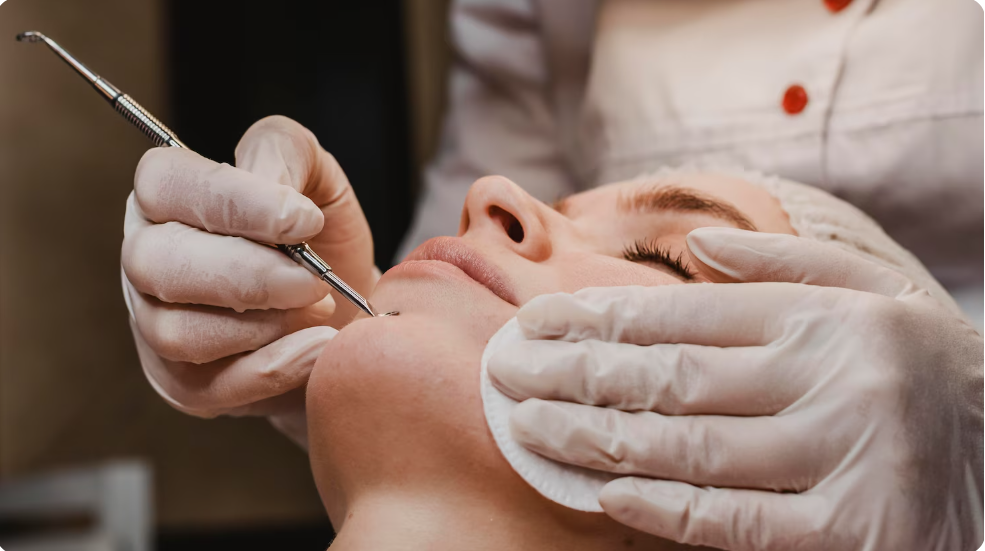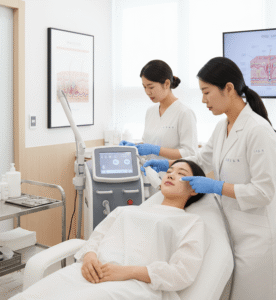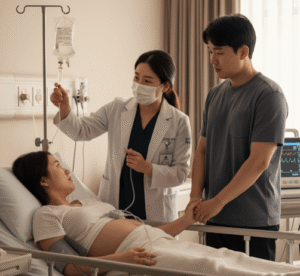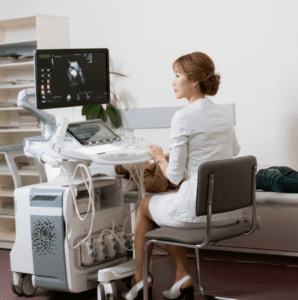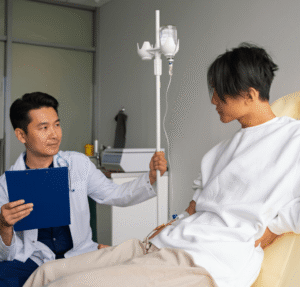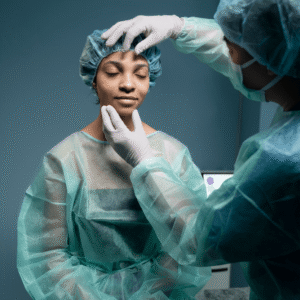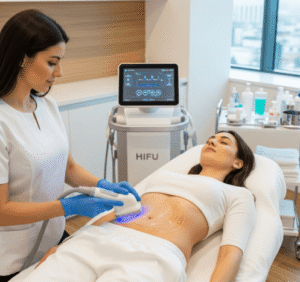What It Is
Cheek implants (Medpor or silicone) are cosmetic devices surgically placed over the malar (cheekbone) region to enhance facial structure and contour. By adding volume and definition, they create a more balanced, youthful appearance. In Korea, this procedure is particularly popular for its emphasis on natural aesthetics and facial harmony.
This treatment is ideal for addressing flat cheeks, underdeveloped zygomatic bones, or age-related volume loss.
Why It’s Done
Cosmetic Goals:
- Define cheekbones and enhance facial symmetry
- Achieve a more youthful, sculpted midface appearance
Structural or Congenital Needs:
- Individuals with naturally flat or under-projected cheeks
- Patients seeking to restore volume lost due to aging
Age & Lifestyle Considerations:
- Ideal for adults of various ages, often combined with facelift or fat grafting in older patients
- Patients with thin skin must choose implant type carefully to avoid visible edges
- Non-smokers recover faster and have better outcomes
Alternatives
- Dermal Fillers (e.g., hyaluronic acid): Temporary enhancement, duration 6–18 months
- Fat Grafting: Uses the patient’s own fat for a natural look, though resorption over time may require top-ups
- Autologous Bone Grafting: More invasive, for those preferring organic material
- Facial Contouring Surgery: Such as zygomatic osteotomy, for complex skeletal restructuring
Preparation
Initial Consultation:
- Facial assessment using 3D imaging to choose implant type and size
- Discussion of patient expectations and aesthetic goals
Medical Work-Up:
- Pre-operative blood tests and general health evaluation
- Avoid aspirin, NSAIDs, and certain supplements prior to surgery
Pre-Surgery Protocols:
- Fasting for 6–8 hours pre-op if under general anesthesia
- Cease smoking and alcohol to promote healing
How It’s Done
Type: Surgical, generally performed under general anesthesia; sometimes deep sedation for select patients
Duration: Approximately 1–2 hours
Procedure Steps:
- Incisions are most commonly made inside the mouth (intraoral approach) to avoid visible scars
- A pocket is carefully created over the zygomatic bone
- The chosen implant (silicone or Medpor) is inserted and positioned
- Fixation may involve sutures or micro-screws to prevent shifting
- Incisions closed with dissolvable stitches
Hospital Stay:
- Typically outpatient or 1-day stay, depending on clinic protocols
Recovery
Initial Phase:
- Swelling and bruising peak in 2–3 days, gradual improvement by 1–2 weeks
- Cold compresses and prescribed oral analgesics help with discomfort
Care Instructions:
- Gentle mouth rinses advised following intraoral incisions
- Soft diet recommended during early recovery days
- Lymphatic massage offered by many Korean clinics to aid swelling reduction
Return to Normal Life:
- Work and social activities can usually resume after 7–10 days
- Final results noticeable in 1–3 months once swelling subsides
Possible Complications
- Infection: Prevented with sterilization and antibiotics
- Implant Migration or Asymmetry: Mitigated by secure fixation and surgical precision
- Nerve Changes: Temporary numbness in upper cheek or lip; rarely permanent
- Visibility or Extrusion: Reduced with correct implant selection and positioning
- Dissatisfaction with Appearance: Addressed via pre-op imaging and surgeon-patient alignment on goals
Treatment Options in Korea
Diagnosis
- 3D Facial Imaging: Helps visualize implant results pre-operatively
- Physical and Structural Assessment: Includes palpation and possible CT/X-ray if needed
- Surgeon Consultation: Board-certified plastic surgeons in Korea specialize in facial anatomy and aesthetic symmetry
Medical Treatments
- Non-Surgical Fillers: Quick, no downtime, but not permanent
- Fat Transfer: A more natural alternative, though requires donor site and has variable longevity
- Threads or Botulinum Toxin: Used for subtle lifts rather than volume addition
Surgical / Advanced Therapies
- Silicone Implants: Smooth, easily adjustable, removable—common choice
- Medpor Implants: Porous polyethylene allowing tissue ingrowth, enhancing long-term stability
- Custom 3D Implants: Designed from CT scans, these conform precisely to your facial skeleton
Rehabilitation and Support
- Post-op Visits: Regular check-ins during healing phase
- Lymphatic Drainage and Facial Massage: Offered at many Korean clinics
- International Patient Services: Include multilingual coordinators, accommodation help, and recovery concierge
- Long-Term Support: Follow-ups to monitor implant stability and aesthetic satisfaction

